Why We Struggle to Decide in a World of Endless Options
In a world where we can compare thirty brands of olive oil or fifty career paths with a swipe, choice paralysis has become the modern curse. We over-research, overthink, and ask Google for answers that only the heart can give.
And still—we doubt ourselves.
That’s where Tarot comes in, not as fortune-telling theater, but as a mirror for what’s already stirring beneath your awareness. Tarot doesn’t tell you what to do; it helps you see what you already know but haven’t trusted yet.
A young woman named Leah once booked a Tarot session to decide whether to stay in her stable corporate job or launch her small candle-making business. She drew The Fool, The Magician, and The Eight of Pentacles. Her reader smiled and said, “You’re not being called to leap without thinking—you’re being called to craft what lights you up.” Leah later said that spread didn’t make her quit overnight; it made her confident in her timing. Within a year, her side business became her full-time career.
Tarot readings often do that—they hold up a psychological mirror, letting intuition have the microphone for once.
Tarot as a Reflective Decision Tool (Not a Magic Wand)
The biggest misconception about Tarot is that it’s about prediction. In reality, it’s about perception.
The images and archetypes speak a symbolic language that bypasses logic. When you see the Two of Swords, you instantly feel the tension of indecision. When The Star appears, hope is rekindled—not because the card created hope, but because it reminded you it was still inside you.
Each card acts like a snapshot of your inner landscape. The Lovers, for instance, rarely tells you which person to choose—it illuminates the deeper theme of alignment. Are you choosing out of fear or faith? Comfort or chemistry? That’s the real reading.
Tarot helps reframe decisions as mirrors of our energy. Instead of “Should I take this job?” the question becomes “Which path reflects who I’m becoming?” That subtle shift changes everything—it moves you from control to consciousness.
The Science Behind Intuition: Why Tarot Works Even for Skeptics
Skeptics often dismiss Tarot as superstition, but modern research into intuition tells a different story. Studies from the HeartMath Institute show that the heart sends more signals to the brain than the brain sends to the heart. In other words, intuition has biology behind it.
(Reference: HeartMath Institute – Science of the Heart)
Meanwhile, Harvard Business Review found that executives who trust their intuition make faster, more confident decisions than those who rely solely on analysis. (When It’s OK to Trust Your Gut)
Tarot amplifies that inner data. Each symbol activates the brain’s associative network, revealing insights that logic filters out. It’s not mysticism—it’s mindfulness with imagery.
The Myth of “Right” Decisions – How Tarot Teaches You to Trust Your Path
We’re taught to chase the “right” answer—as if life were a multiple-choice test and the universe was grading in red ink. Tarot teaches a softer truth: there are no wrong answers, only different timelines for your growth.
When you pull The Two of Swords, it’s not about punishment for indecision—it’s acknowledgment that both options may hold value. One might lead to mastery, the other to liberation. Tarot doesn’t promise safety; it promises self-honesty.
A psychic reader once told a client stuck between two love interests, “Your heart already knows the answer. The cards just reveal which story your energy is already writing.” The reading wasn’t about picking a person—it was about realizing she had been choosing out of guilt rather than joy. Once she saw that pattern, the decision unfolded effortlessly.
The paradox of Tarot is that it often tells you what you’ve known all along but couldn’t admit. That’s its power—it bypasses excuses and brings you face-to-face with your soul’s truth.
Real-Life Examples of Tarot Decision Moments
1. The Career Crossroads
A nurse torn between staying at her hospital job or going into public health drew The Chariot, Justice, and The Queen of Swords. Her reader explained these as symbols of leadership, fairness, and clear communication—traits of a reformer, not just a caregiver. Within months, she applied to a policy program and found her deeper calling.
2. The Relationship Dilemma
A man debating whether to propose to his partner drew The Hierophant, The Four of Wands, and The Hanged Man. The cards suggested structure, celebration, and perspective shift. He realized he feared losing freedom when what he actually needed was to redefine it within partnership. He proposed six weeks later, not because Tarot “said so,” but because he stopped resisting his own readiness.
3. The Relocation Leap
A woman wondering if she should move abroad pulled The Fool, The Wheel of Fortune, and The Sun. Her reader laughed and said, “Your cards are already on the plane.” She later shared that she moved not because it was easy—but because it finally felt aligned.
4. The Creative Breakthrough
A writer who had sat on a novel draft for years asked for a reading. She drew The Magician, The Page of Wands, and Strength. The spread reminded her she already had every tool she needed—the block wasn’t external; it was fear of visibility. She published her book within the year.
Tarot doesn’t decide for you—it unveils the energy around your decision, like switching on a light in a dim room.
How to Use Tarot to Make Decisions – Step-by-Step Guide
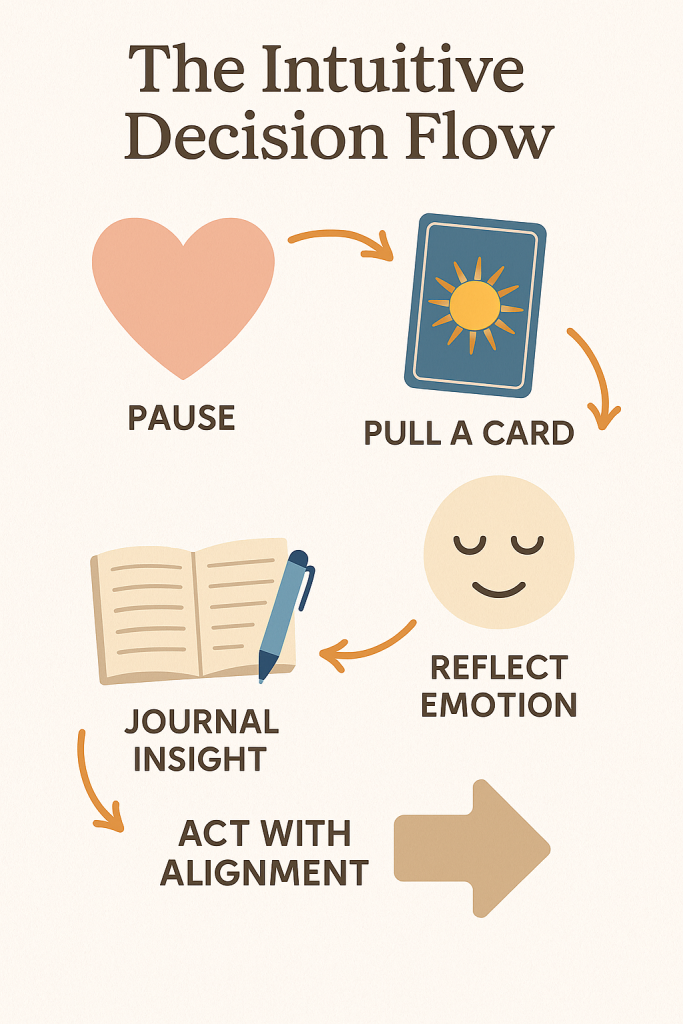
Step 1: Clarify the Question
Instead of “What should I do?” try “What energy am I bringing to this choice?” This invites reflection, not dependence.
Step 2: Choose a Spread That Fits
A “Two Paths Spread” or “Crossroads Layout” is perfect for comparing two options.
Step 3: Read Symbolically
Don’t interpret cards literally—see them as mirrors of mood and momentum.
Step 4: Journal the Insights
After the reading, write how each card made you feel. Often, the emotion tells the story the mind resists.
Step 5: Act While the Intuition Is Alive
Take one small inspired action within 48 hours. Energy fades when it’s overanalyzed.
Tarot’s magic isn’t the prediction—it’s the permission it gives you to act on what feels right.
Common Mistakes to Avoid When Using Tarot for Decisions
Even the most spiritually aware readers sometimes get caught in subtle traps that turn intuitive wisdom into mental noise. These mistakes don’t make you “bad” at Tarot—they simply block clarity.
Mistake 1: Asking Yes/No Questions
Questions like “Should I quit my job?” limit what the cards can reveal. Tarot reflects nuance, not binary answers. A better phrasing might be, “What will each choice teach me?” or “What energy am I aligning with if I stay versus if I leave?”
Mistake 2: Over-Pulling Cards
When anxiety kicks in, people sometimes pull extra cards hoping for reassurance. But more cards don’t equal more clarity—they create confusion. It’s like refreshing your email waiting for a reply that’s already written. One spread is usually enough; the rest is about listening.
Mistake 3: Reading from Fear, Not Curiosity
If you’re emotionally charged, you’ll interpret every Tower as disaster. When calm, you’ll see it as transformation. Tarot reveals your inner tone more than your outer future. Before pulling, take three deep breaths and ground yourself in neutrality.
Mistake 4: Ignoring Intuition Because It’s Inconvenient
Sometimes the cards tell us what we don’t want to hear. Yet those are often the most important readings—the ones that point out emotional blind spots. Intuition doesn’t flatter the ego; it frees it.
Mistake 5: Expecting Tarot to Decide for You
Tarot isn’t meant to replace free will; it’s a co-navigator. Think of it as your soul’s GPS—it can show all possible routes, but you still have to drive.
When to Call a Tarot Psychic Reader
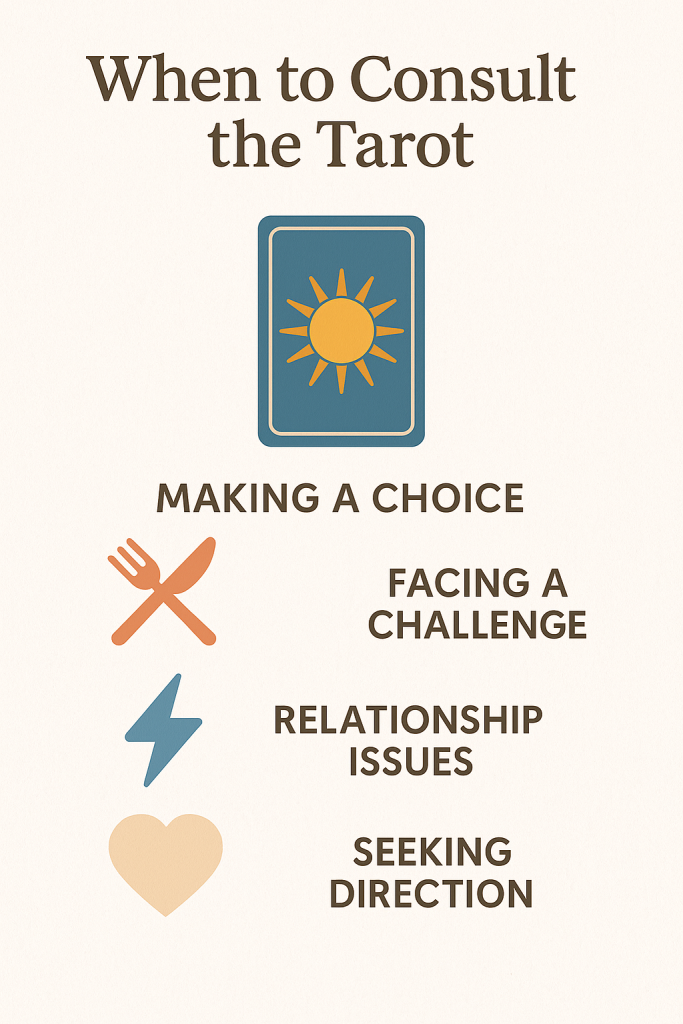
There’s a difference between reading for yourself and letting a professional read for you. Self-readings can be colored by bias, fear, or overthinking. A psychic reader acts as a clear channel, reflecting patterns you may not see.
A woman once misread The Tower as an omen of her relationship ending. When she consulted a PsychicOz reader, the psychic reframed it as energetic clearing—a breakthrough, not a breakup. Two weeks later, her partner proposed after an honest conversation that changed everything.
Professional psychics don’t impose decisions; they illuminate energy. They can help interpret subtle emotional layers—what’s intuitive guidance versus what’s anxiety. Sometimes your energy is too entangled to see clearly, and that’s when outside insight becomes invaluable.
If you’re facing a major crossroads—career change, relocation, divorce, or spiritual awakening—seeking a reading from a trusted advisor can help align your choices with your higher purpose. PsychicOz, for instance, offers verified readers who specialize in decision-based Tarot consultations.
The Tarot Mindset: Decision-Making as Soul Dialogue
The most powerful way to use Tarot isn’t to predict—it’s to dialogue. Each card represents a facet of your consciousness. When you pull The Hermit, it may ask, “Have you given yourself enough solitude to hear your own truth?” When The Sun appears, it whispers, “Can you allow joy even without guarantees?”
Think of Tarot as a conversation between your current self and your higher self. The cards act as translators between fear and faith.
Energetic Decision Mapping – A Fresh Concept
Every decision carries its own frequency. When you draw cards about two paths, you’re not seeing the future—you’re reading the vibrational compatibility between you and those timelines. I call this “Energetic Decision Mapping.”
For instance, if The Emperor appears in Path A, it signals a timeline of structure and authority. If The Star shines over Path B, it invites inspiration and renewal. Neither is “better.” The question becomes: which energy resonates with who you’re ready to be?
Tarot isn’t just spiritual entertainment—it’s energetic navigation.
Humor and Humanity in the Cards
The Tarot has a sense of humor, too. The Fool teaches us not to take life too seriously, reminding us that risk is part of adventure. A client once obsessed over pulling The Tower during every reading. Her psychic told her, “Maybe your higher self is just saying you need new furniture.” That laughter broke her tension and opened her to joy again.
Tarot’s humor grounds spirituality in humanity. Sometimes the cosmic joke is simply that the lesson was never as complicated as we made it.
The Future of Decision-Making – Combining Tarot and AI Intuition
We live in an age where algorithms predict everything from what we’ll watch to who we’ll date. Artificial intelligence measures patterns in data, while Tarot measures patterns in energy. One relies on computation; the other on consciousness. Yet both share the same goal—understanding human choice.
Imagine blending the two. AI offers rational analytics, Tarot offers emotional truth. The sweet spot lies where logic meets intuition. An executive could use spreadsheets to project profits and Tarot to sense timing or team alignment. A creative could use AI tools to plan campaigns and Tarot to feel whether the concept vibrates authentically.
According to a study published in MIT Sloan Management Review (Balancing Data and Intuition in Decision-Making), the best leaders trust data and gut instincts. Tarot brings that gut wisdom to the surface consciously, training us to feel patterns as clearly as we see them.
The future of decision-making might not be choosing between logic or intuition, but letting both dance. When science and spirit collaborate, decisions become not just strategic—but soulful.
Conclusion – The Magic Isn’t in the Cards, It’s in You
Tarot doesn’t make decisions for you—it awakens your ability to make them with confidence, clarity, and compassion. The deck simply reflects what your soul already knows but your mind hasn’t translated yet.
Next time you face a choice, pull a card not to predict, but to reflect. Ask, “What part of me is this card speaking to?” Then listen—not with your head, but with your energy.
If the path still feels cloudy, that’s when a professional psychic can help interpret what your higher self is hinting at. Platforms like PsychicOz connect seekers with intuitive readers who specialize in decision-focused Tarot, helping you find alignment when the logic alone feels flat.
Because the real magic isn’t cardboard and ink—it’s the conversation between your intuition and the universe. The cards are just the language.
FAQs: Using Tarot Cards to Make Decisions
1. What makes Tarot useful for decision-making instead of pure logic?
Tarot externalizes your intuition through symbolic imagery, helping you see emotional truths and blind spots that spreadsheets can’t capture.
2. How do I phrase a decision question for Tarot?
Use open, reflective wording like “What energy surrounds Path A vs. Path B?” or “What am I ready to learn if I choose this?”
3. Can Tarot predict the “right” choice?
Tarot reveals alignment and likely dynamics, not fixed fate. It shows resonance between you and a timeline so you can choose consciously.
4. Which spreads work best for choices?
Two Paths (Option A vs. B), Crossroads (costs/benefits/lesson), and Outcome Trajectory (near-term vs. long-term energy) are excellent.
5. How many cards should I pull for a decision?
Start with 5–7 cards. More isn’t clearer; it can dilute the signal and reflect anxiety rather than guidance.
6. What if I keep pulling the same card for this choice?
Repetition signals a core theme you’re avoiding or underestimating. Journal around that card’s lesson before pulling again.
7. Is it okay to ask yes/no questions?
It’s less helpful. Reframe to “What supports or challenges exist if I proceed?” You’ll get richer, action-ready insights.
8. How often can I read on the same decision?
Once meaningfully, then wait until something changes—new info, feelings, or timing. Re-reading too soon muddies clarity.
9. I pulled The Tower—does that mean disaster if I choose this?
Not necessarily. Tower means rapid truth and restructuring. It can indicate a breakthrough if you release what’s outgrown.
10. What cards suggest it’s a good time to act?
The Chariot, Ace of Wands, The Sun, and Eight of Pentacles often signal momentum, vitality, or skill-building traction.
11. What cards suggest I should pause?
The Hanged Man, Four of Swords, and Temperance point to patience, reframing, and integration before action.
12. Which cards warn of hidden information?
The Moon, Seven of Swords, and the High Priestess highlight ambiguity, misalignment, or the need for inner confirmation.
13. Can I read for myself without bias?
Yes—ground first, write your fear on paper, set it aside, and read from curiosity. If still tangled, consult a professional.
14. How do I combine Tarot with research and data?
Use data for facts and Tarot for fit. Decide at the intersection of viability (data) and vitality (energy).
15. What’s Energetic Decision Mapping?
It’s reading how your field resonates with each path. Cards reflect compatibility between your current frequency and outcomes.
16. How do I interpret “negative” cards in a decision spread?
Translate them into needs and actions. Example: Five of Pentacles becomes a resource plan, community support, and timeline adjustments.
17. What if both paths look good?
Then you can’t lose—choose based on identity. Pick the path that grows the version of you you’re excited to meet.
18. Can Tarot help with micro-choices (emails, texts, scheduling)?
Yes, but set boundaries. Use Tarot for meaning-rich choices; use routines for small tasks to avoid spiritual procrastination.
19. How do I know if fear is speaking or intuition?
Intuition is brief, neutral, and clear. Fear loops and catastrophizes. Your first calm impression after pulling is often true.
20. What if I’m emotionally flooded when reading?
Pause and regulate—breathe, move, hydrate—then return. Or ask a reader to hold space; overwhelm distorts interpretation.
21. Which suits indicate what kind of decision I’m facing?
Wands for purpose and drive, Cups for relationships and values, Swords for strategy and communication, Pentacles for money and health.
22. How do court cards influence choices?
They surface roles and maturity. Pages begin, Knights move, Queens master within, Kings lead outwardly.
23. Can reversals change my decision?
Reversals highlight internalized energy or blocks. They don’t forbid; they suggest where to support yourself first.
24. What’s a good post-reading action?
Take one concrete step within 48 hours—send the email, book the call, outline the plan. Momentum grounds guidance.
25. How do I time a decision with Tarot?
Look for pacing cards like Knight of Pentacles (slow-build), Eight of Wands (soon), or clusters of Majors (karmic timing).
26. Is it ethical to read about other people in my decision?
Focus on your energy, consent, and boundaries. Read what you control, not others’ private motives.
27. Can Tarot help me choose between two people?
Yes—ask what each connection teaches and how you show up with each. Choose the dynamic that grows secure, joyful love.
28. How do I avoid confirmation bias?
State a falsifiable hypothesis before pulling, then accept what appears—even if it challenges your preference.
29. When should I hire a psychic reader?
When stakes are high, emotions are loud, or patterns repeat. An ethical reader brings neutral clarity and timing.
30. How do I close a decision-focused reading?
Name your choice aloud, thank the archetypes, and set a review date. Ritual closes loops and builds self-trust.

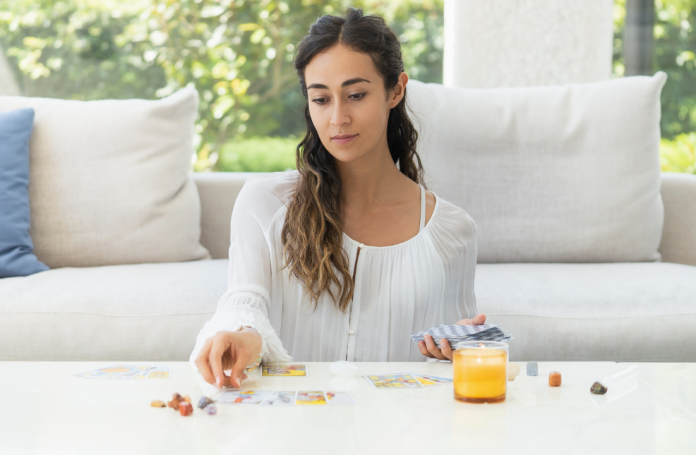
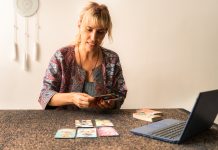

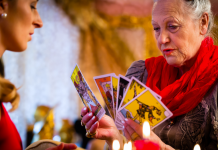
What a fascinating perspective on decision-making! The integration of Tarot cards as a tool for navigating life’s challenges is truly intriguing. It adds a spiritual and intuitive layer to the process that traditional methods might overlook. The detailed descriptions of each card and how they can guide us are both insightful and empowering. A must-read for anyone seeking a holistic approach to decision-making.
While the article is well-written, I’m skeptical about relying on tarot cards for significant decisions. It might be more reliable to consult professionals in critical situations.
The detailed descriptions of each tarot card are quite informative. It makes me curious to try this approach at least once.
I agree, Lucille. The explanations are thorough, and it seems like a holistic way to gain insight into one’s life.
While the idea is intriguing, I think it’s essential to balance such practices with rational thinking and objective advice.
The part about using intuition and finding inner peace through tarot cards is quite appealing. It appears to blend well with other self-help strategies.
While the use of tarot cards for making decisions can be an intriguing and mystical approach, it is critical to approach this method with a discerning mind. Relying solely on tarot readings for major life decisions could potentially lead to unintended consequences. Tarot cards can provide a form of reflective insight, pushing individuals to contemplate their choices more deeply, but they should not replace rational analysis or advice from qualified professionals. The suggestion that tarot readings can provide a definitive guide to life’s complex problems oversimplifies the intricacies of human decision-making. A balanced approach that combines intuition, rationality, and guidance from credible sources is essential for making sound decisions.
The suggestion to use tarot cards for making life decisions is unconventional but fascinating. It seems to offer a unique way to reflect on different aspects of life.
The article provides a thoughtful exploration of how tarot cards can serve as a tool for introspection and decision-making. It’s fascinating to see the detailed interpretations of various cards and how they can guide different aspects of our lives. While some might be skeptical about the efficacy of tarot, it’s important to remember that these tools often work by helping us to tap into our subconscious and intuition. This can offer us a fresh perspective, especially when we are at a crossroads. Combining such metaphysical approaches with practical advice from therapists or consultants could provide a holistic approach to making well-informed decisions.
The article provides an interesting perspective on decision-making, especially using tarot cards for guidance. I wonder how effective this method is compared to more conventional methods like therapy or counseling.